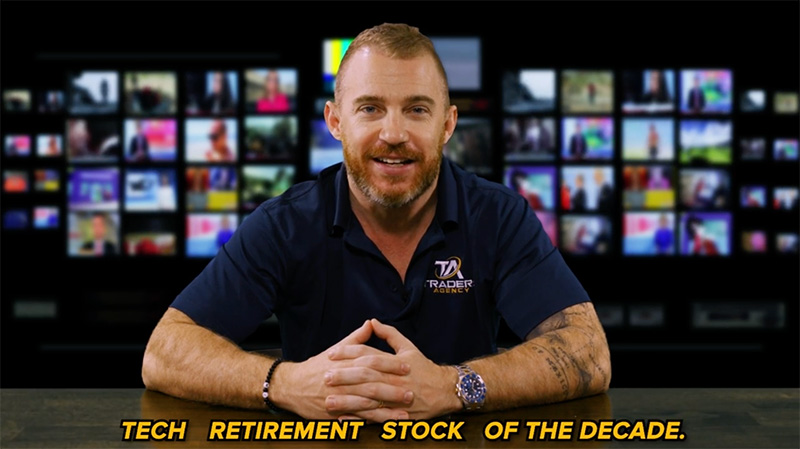How to know when to stay out
let’s talk about when to trade, when not to trade. Okay, so couple things. Number one, this really comes down to your strategy and your core belief and if you have the ability to follow a set of rules. Sometimes, people, they just don’t have the ability to be disciplined. They get too excited, the fear of missing out takes control of them, and then that’s usually where they make mistakes. Other times, people really just don’t have a set of rules, and if you don’t have a set of rules that you obey, then it really, in my opinion, can come down to core beliefs.
One of my core beliefs is the markets U-turn at, on, and/or around the same price points. Because of that, I’ve developed some basic rules that help me follow my core beliefs. You can see this is NASDAQ 100. This is a daily timeframe with every one of these candlesticks represents one day of trading. With the E-mini contract, every tick’s worth about $5. With the micro, every tick’s worth about 50 cents.
When we have this pattern, and this pattern is an up channel, whenever the mark comes to the bottom blue level, the market goes to the top blue level, so support, resistance, support, resistance, support, resistance, support, resistance. Okay? So at the end of the day, this is the pattern that we’re in, and it’s been around for quite a bit, since last year, the later end of 2020. Whenever the market comes near the bottom level, the market tends to go up. Whenever the market touches the top blue level, the market tends to go down.

But one of the things that you got to notice is whenever the market touches the top blue level, it doesn’t go down right away. Here it touched the top level, and then for one, two, three, four, five additional days it went up, and then the selloff occurred. Over here, it touched the top blue level, and then one, two, three, four additional days, and then the selloff took place. Right? But when you look at the bottom blue level, it touched the blue level, and then it went up right away. Touched the bottom blue level and then went up right away. Touched the bottom blue level, then went up right away, come near it.
Touched the bottom blue level, came near it, touched the bottom blue level, went up right away. So there is a huge difference than trying to sell versus trying to buy, because the overall drift is up. When the drift is up, usually, if you trade in the direction of the trend, usually you’ll win more trades just through experience. When we look to buy the bottom blue level and the uptrend, normally the market has the ability to go our way right away, which is a good thing. Right? You want to enter into a trade and have it go your way right away.
But here’s a mistake that I believe new people make. Visually, when they look at this top blue level, they go, “Oh, we’re at the top level,” let me just go ahead and sell the market now. But the problem is, when you’re new and you trade against the trend, you just don’t have the experience to know how bad of an idea that is, because here the market’s going, even though it touched the top blue level, it still goes up for another four or five days, then it falls, four or five days and then it falls.
For most people, when they’re in a trade for four or five days and it’s going against them, then psychologically they’re probably going to close the trade. They’re like, “I don’t know. You entered into a trade. It’s gone against you. I don’t know. Am I right? Am I wrong? Were trends going up? Is it going to break bullish? I don’t know.” And then you close your trade with a loss, and then at falls. So psychologically, you’re at a disadvantage, number one.
Number two, we you trade against the trend, you’re also at a disadvantage because the longer you hold onto your trade percentage-wise, the more it’s going to go against you. And then you’re right. We don’t know if it’s ever going to break bullish. Right? So here at NASDAQ for me, I look at NASDAQ, and I say to myself, “Okay. We are approaching the top blue level.” I am out of the market until when? Until the market comes to the bottom blue level. Why? Because when or if the market touches the bottom blue level, we have history of the market usually U-turning almost right away and going towards the top blue level, which is a good thing.
If the market breaks bullish, great. Let it break bullish. Let’s test the backside, and I’m going to look to buy at the U-turn on the backside. That’s also a good thing. So which means we’re looking to buy low prices, near known levels of U-turn in the direction of the trend, and that, ladies and gentlemen, is called stacking the odds in your favor. So if you like the idea of stacking the odds in your favor, so when we enter into the market at a low price in an uptrend at a known level U-turn toward us, historically speaking, the market goes your way right away. Then you know, that buying now is a bad idea. Selling now is a bad idea. But waiting for it to reload is a good idea. Hey, everyone, that’s this week’s idea. It’s Joshua Martinez. Appreciate the opportunity, and we’ll see you next week.
Hey guys, if you enjoy this video and you want to stay up to date to my weekly content, go ahead and subscribe to this channel, tradersagency.com. If you want to be notified every time I post a video, go ahead and click on that bell down below. If you want even more information, don’t forget to visit my website at tradersagency.com and subscribe to my free weekly newsletter, where I send out my research on market opportunities. Thank you for the opportunity. Have a wonderful day.




